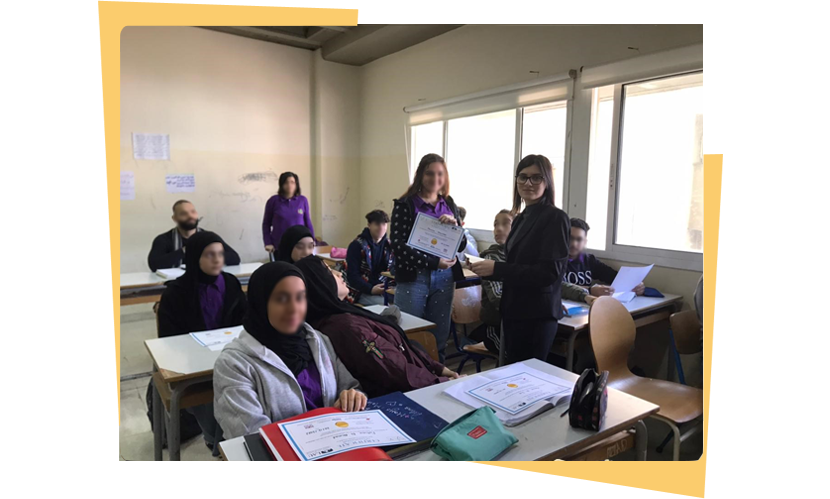What’s going on in Lebanon?
A little bit of context…
For years now, Lebanon has been experiencing one of the most crippling humanitarian crises, marked by economic depression, severe currency devaluation, political corruption, electricity shortages, the COVID-19 pandemic, a cholera outbreak, and above all, the August 4th Beirut Explosion, which exacerbated the situation in Lebanon on different levels.
These crises have primarily impacted children and youth, jeopardizing their basic human rights (security, health, and education).

-99%
Currency lost more than 99% of
its value
(see
reference)
+483%
prices for goods
drastically
increased
(see
reference)
-84%
of households struggled to
provide the basic needs
(see
reference)
+595%
prices for electricity, water and
gas increased
(see
reference)
Lebanon is currently grappling with an unprecedented economic crisis, as the nation has witnessed a staggering 99 percent depreciation of its currency. This drastic devaluation has plunged the country into a state of economic turmoil, leaving its citizens to grapple with the harsh reality of soaring prices for basic goods and services. The cost of household necessities has skyrocketed, making it increasingly challenging for the people to meet their basic needs. Moreover, the surge in electricity, gas, and water prices has further exacerbated the hardships faced by the population. The once vibrant and resilient nation is now confronted with the daunting task of rebuilding its economic foundation and providing relief to its struggling citizens.
Education in Lebanon
The educational sector in Lebanon has been suffering for a long time, and so have the youth, who still refuse to let external circumstances dictate their future. These are some of the facts that the youth of Lebanon are facing..
Education is not a priority
52%
52% households reduction in education expenses (UNICEF, 2023)
Loss of children’s rights
15%
15% of families stopped their children’s education (UNICEF, 2021)
Loss of students
3 in 10
3 in 10 young people
have
stopped their education
(UNICEF, 2022)
Youth struggles
Those have resulted by the decline in mental health among Lebanese youth. In fact,, in a recent study, around half of the 717 young adults were experiencing moderate to high levels of depression (54.26%) and anxiety (55.51%) during COVID-19 (Sanchez-Ruiz et al., forthcoming).
In particular, vulnerable Lebanese youth in public schools, who are the target of our intervention, are likely to be suffering even more from psychopathology and the lack of support services. With Lebanon’s limited strategy and resources on mental health, Lebanese youth are now at higher risk than ever for mental distress and subsequent school drop-outs.
5%
Only 5% of children sought professional help
8%
Rates of depression
increased
by 8%, murder by 18% in 2022.
55%
Experiencing
anxiety
54%
Approximately 54.26% experiencing depression
Youth mental health in Lebanon
In addition to the dire status of the educational sector in Lebanon, we notice how the youth are suffering on a psychological level. These findings illustrate this notion..

Youth and mental
health
Psychiatric disorders increase
A study conducted in 2022 reported that 32.7% out of 1,512 children and adolescents had a high risk of developing at least one psychiatric disorder, with only 5% seeking professional help.
Aditionally, Lebanon’s Suicide rates have increased 32% over nine years (2014-2022)
Promoting sustained well-being through personal development
Fighting against
the odds
Taking the Lead
Amidst the implementation of YEY, students showcased an extraordinary capacity to defy the odds, courageously navigating through challenging circumstances.
Their tenacity not only enabled them to overcome obstacles but also empowered them to spearhead multiple initiatives in their personal lives, cultivating positive change and elevating their own growth and well-being.
Self development through EI
Many students displayed positive change through developing emotional intelligence traits that would help them in their day to day lives!
Coping in difficult situations
An individuals ability to cope in difficult situations is not easy to tackle. However, students were able to develop better coping strategies in their respective social groups and get rid of “not so good” ones!
Better quality of life
Overall, the program shows its success in a straight forward sense by showing that students were able to have lower levels of depression and anxiety, and improved well-being!
